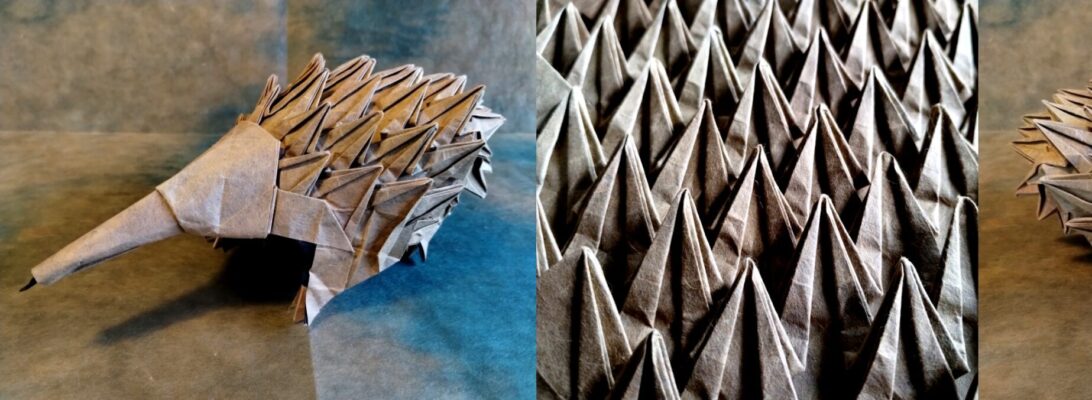Leafing through one of the origami books I helped edit, I came across a cutey little “Godzila”esque model I had not folded:

Designed by Oriol Esteve, from his book “Fold with the Flow”, this charming little Chibimonster seems ready to terrorise Tokyo and dodge nukes as the ineffectual army fights back.
I used to watch monster movies with a passion, and the old “guy in a rubber suit” versions were terrifying as a kid, but the whole Godzilla franchise seems to go on and on with re-imaginings and various levels of tech in the VFX often getting in the way of the story, at least these days.

I had a 25cm square of blue metallic paper (I think from a sample pack from Origami-shop) that was light blue on the reverse, so decided to torture it into shape. The book suggests Kami, and thinner paper would have made some of the moves less thick, but I think I like him chunky. It is a fun design, starting with one of Oriol’s much-used bases. I like that both the eyes and the back spikes are colour changed. The proportions are nice and I also like that he free-stands because the centre of gravity has been considered in his pose.


























